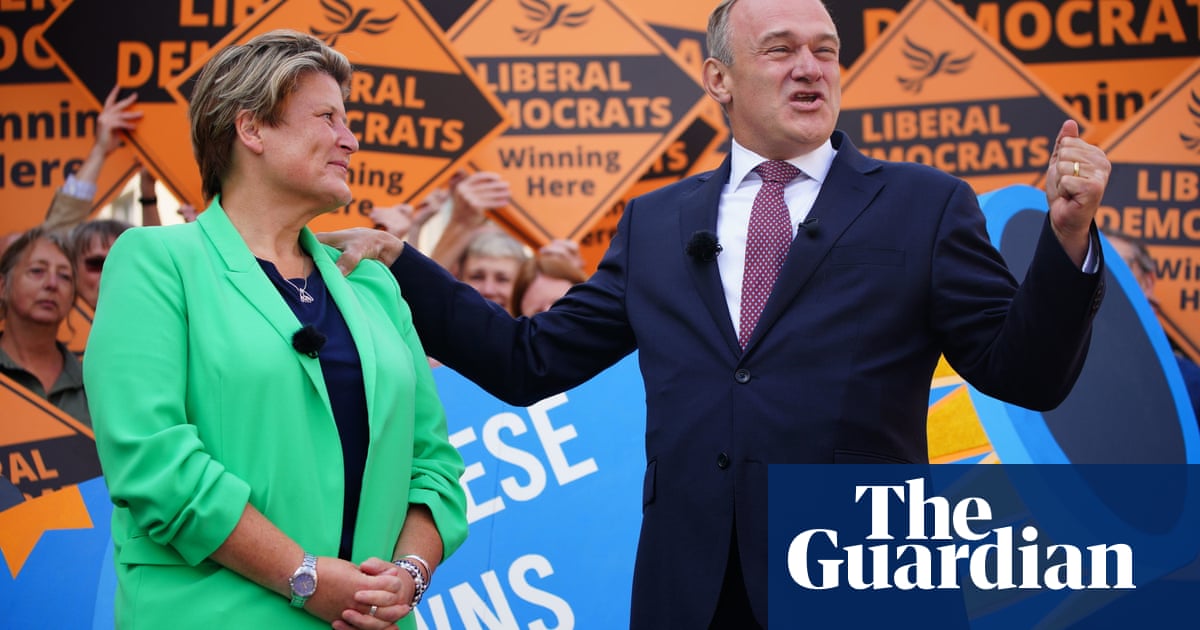
Asked to sum up voters’ general impression of the Liberal Democrats, one pollster at their conference ventured “cuddly”. Well, yes and no. For all their comforting woolliness, England’s perennial third party is arguably building the UK’s most ruthless and focused election-fighting machine.
To an extent, this is not news: of the 20 biggest byelection swings since 1945, four have been Lib Dem wins under Ed Davey since 2021, a product of ultra-disciplined messaging and a more-is-more attitude to leaflets and canvassing.
What is new, and could potentially play a big role in the next general election, is the way the party has extended this infrastructure nationally, and how it is choosing to prioritise finite resources.
The Lib Dems’ approach is, at its heart, to worry much less about winning votes and focus entirely on winning seats. If you are a Lib Dem candidate and your constituency is not on the target list? Basically, you’re on your own.
The trigger was the 2019 election, written off even by the Lib Dems as a “car crash”, but one which has provided them with insight and an almost paradoxical sense of opportunity.
Giddy pre-election forecasts of 100-plus MPs crashed to a final tally of 11. But at the same time, then leader Jo Swinson, who lost her own seat, added more than 1.4m votes to the party’s 2017 total, a 55% increase. Lib Dem candidates came second in 91 constituencies, 80 of these to a Conservative, a springboard for the current fight in blue wall seats.
After Davey replaced Swinson, he and his team set about rebuilding a fragmented party machinery, making it streamlined and aimed entirely at the goal of more seats.
Helmed by Dave McCobb, a Hull councillor who is the party’s much-respected election coordinator, a strategy emerged from the byelections in which a group of senior officials, McCobb among them, would begin by simply knocking on lots of doors and asking people what concerned them.
This generated clear local messages, which could also be used nationally: sewage from the Chesham and Amersham byelection; ambulance waiting times in North Shropshire.
Every three months, the 50 Lib Dem activists members who have recorded the most voter interactions over that period join a call with McCobb, Lib Dem president, Mark Pack, and others to update them on how the messages are landing.
While the Lib Dems are targeting a handful of Labour-held seats, the preponderance of contests with Tory candidates means policies and priorities are heavily based on tempting over former Conservative voters who have grown weary of the party’s dramas.
This means a relentless national focus on issues such as sewage, the NHS and the cost of living, with more traditional Lib Dem fare such as electoral reform still in the draft manifesto but relegated to a lower “tier” and barely discussed.
All of this is then directed at identifying seats where enough disillusioned Tories and tactically-voting Labour supporters can be tempted to the Lib Dem side.
As a candidate in a target constituency you get money, resources, and floods of volunteers from other areas. If you are not; well, you get asked to send volunteers elsewhere and wished the best.
The list is not fixed. It is determined by a mix of polling and a metric based largely on legwork. The overall aim is, as one official put it, to give voters the impression of “winning momentum”.
There is, however, one thing no one will talk about, even privately: how many seats it could secure. The broad view seems to be that fewer than 30 would be regarded as a huge disappointment; more than 40 a triumph.
Thirty would double the party’s current tally. More than 40 would be approaching the glory days of 2005 and 2010. Will it happen? No one really knows. But if it does not, it will not be for want of effort.












